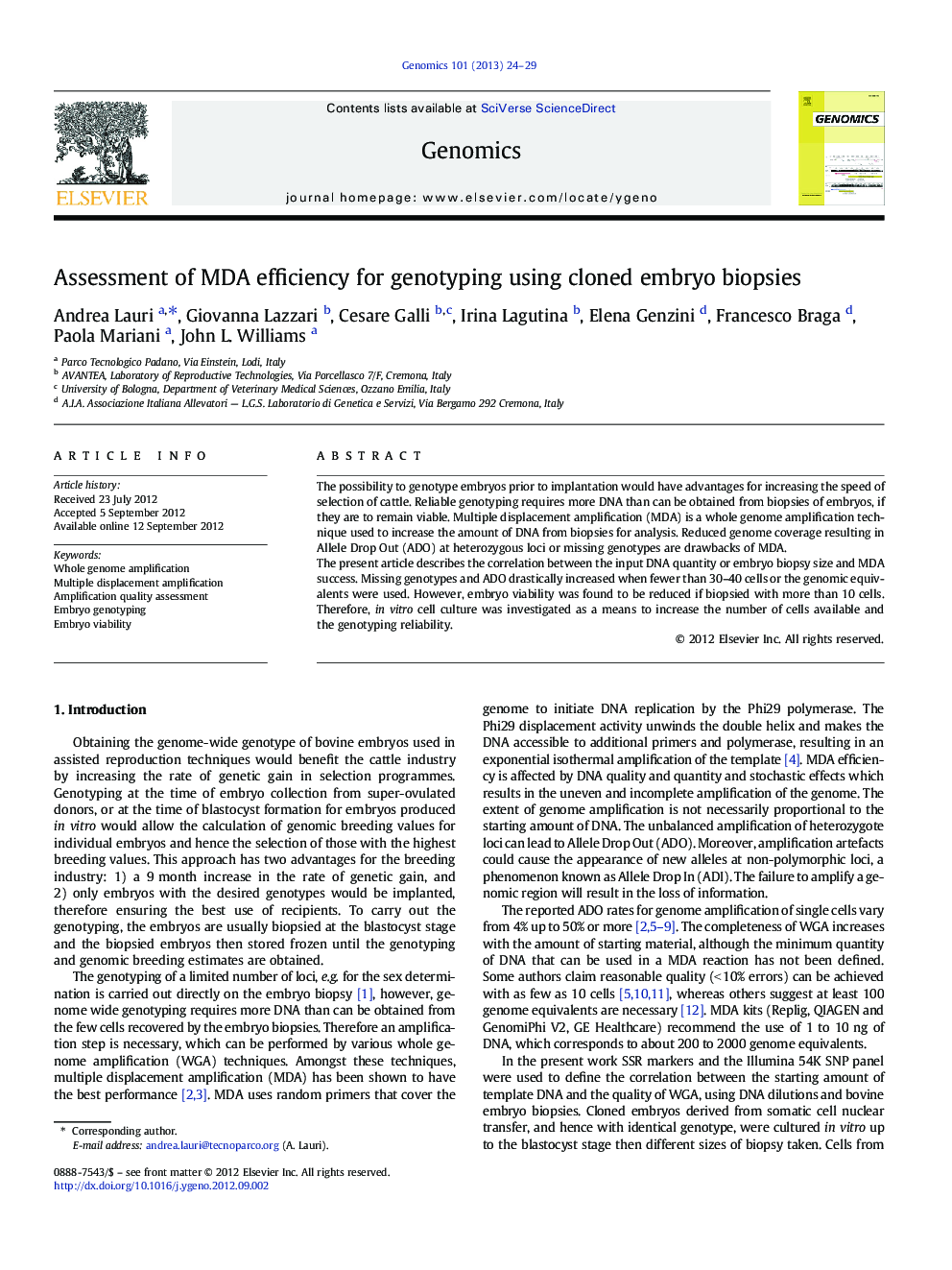| Article ID | Journal | Published Year | Pages | File Type |
|---|---|---|---|---|
| 2820841 | Genomics | 2013 | 6 Pages |
The possibility to genotype embryos prior to implantation would have advantages for increasing the speed of selection of cattle. Reliable genotyping requires more DNA than can be obtained from biopsies of embryos, if they are to remain viable. Multiple displacement amplification (MDA) is a whole genome amplification technique used to increase the amount of DNA from biopsies for analysis. Reduced genome coverage resulting in Allele Drop Out (ADO) at heterozygous loci or missing genotypes are drawbacks of MDA.The present article describes the correlation between the input DNA quantity or embryo biopsy size and MDA success. Missing genotypes and ADO drastically increased when fewer than 30–40 cells or the genomic equivalents were used. However, embryo viability was found to be reduced if biopsied with more than 10 cells. Therefore, in vitro cell culture was investigated as a means to increase the number of cells available and the genotyping reliability.
► Whole genome genotyping was used to assess MDA quality from bovine embryo biopsies. ► Genome Coverage, Allele Drop Out and Allele Drop In were the considered parameters. ► MDA quality positively correlates with the quantity of input DNA and biopsied cells. ► A biopsy size of 30 cells is needed to obtain high quality MDA for genotyping. ► Larger biopsies allow higher MDA quality but limit embryo viability.
